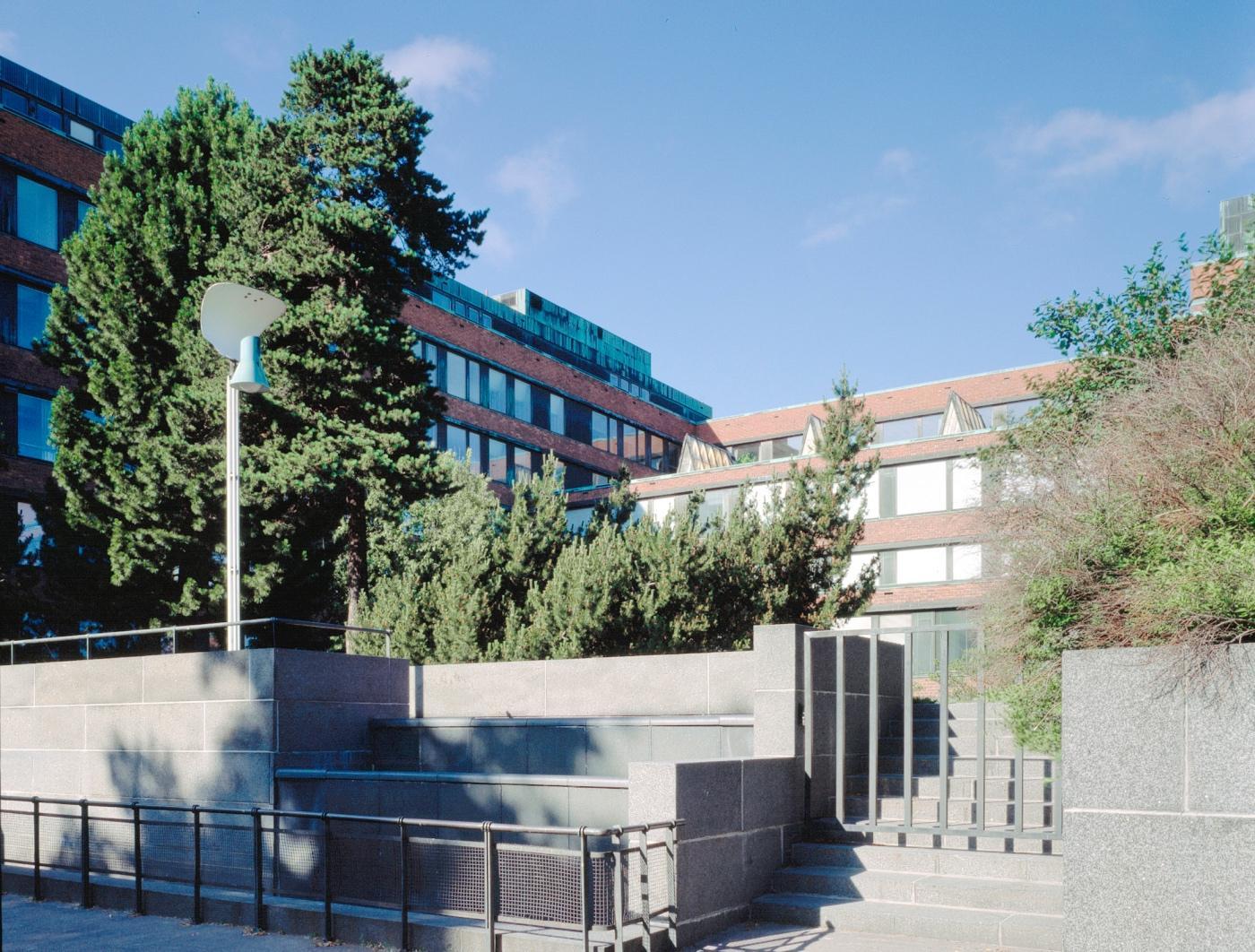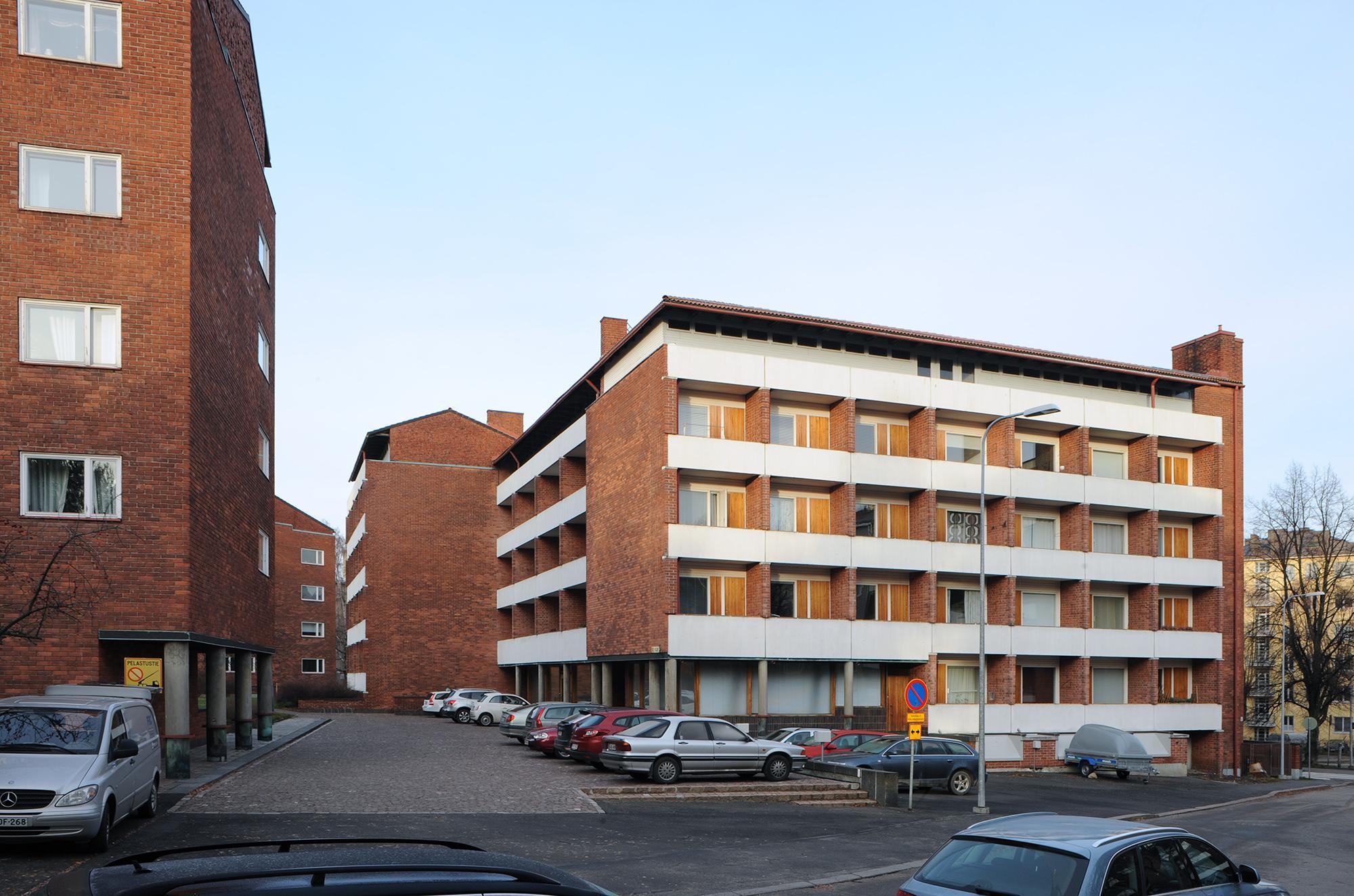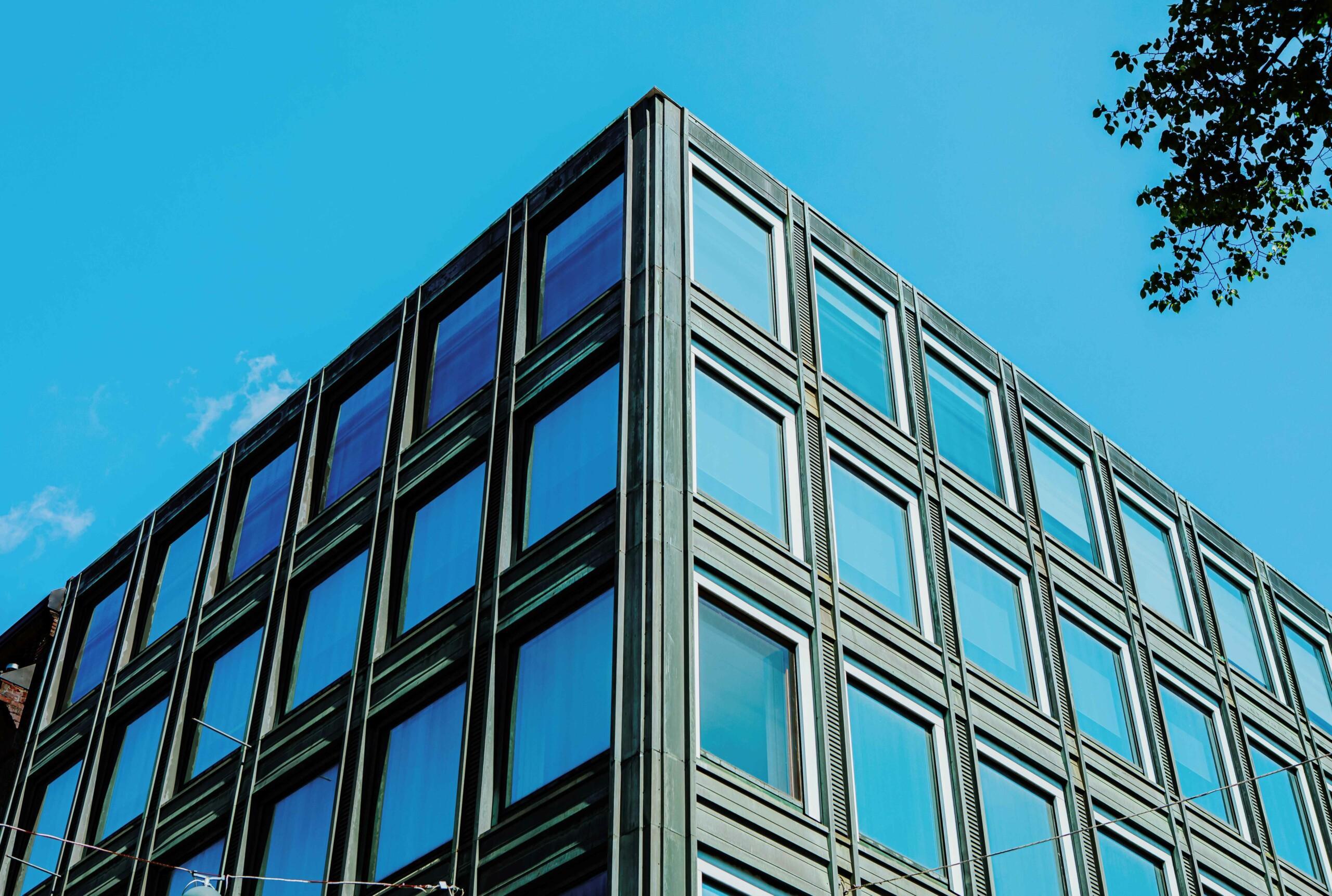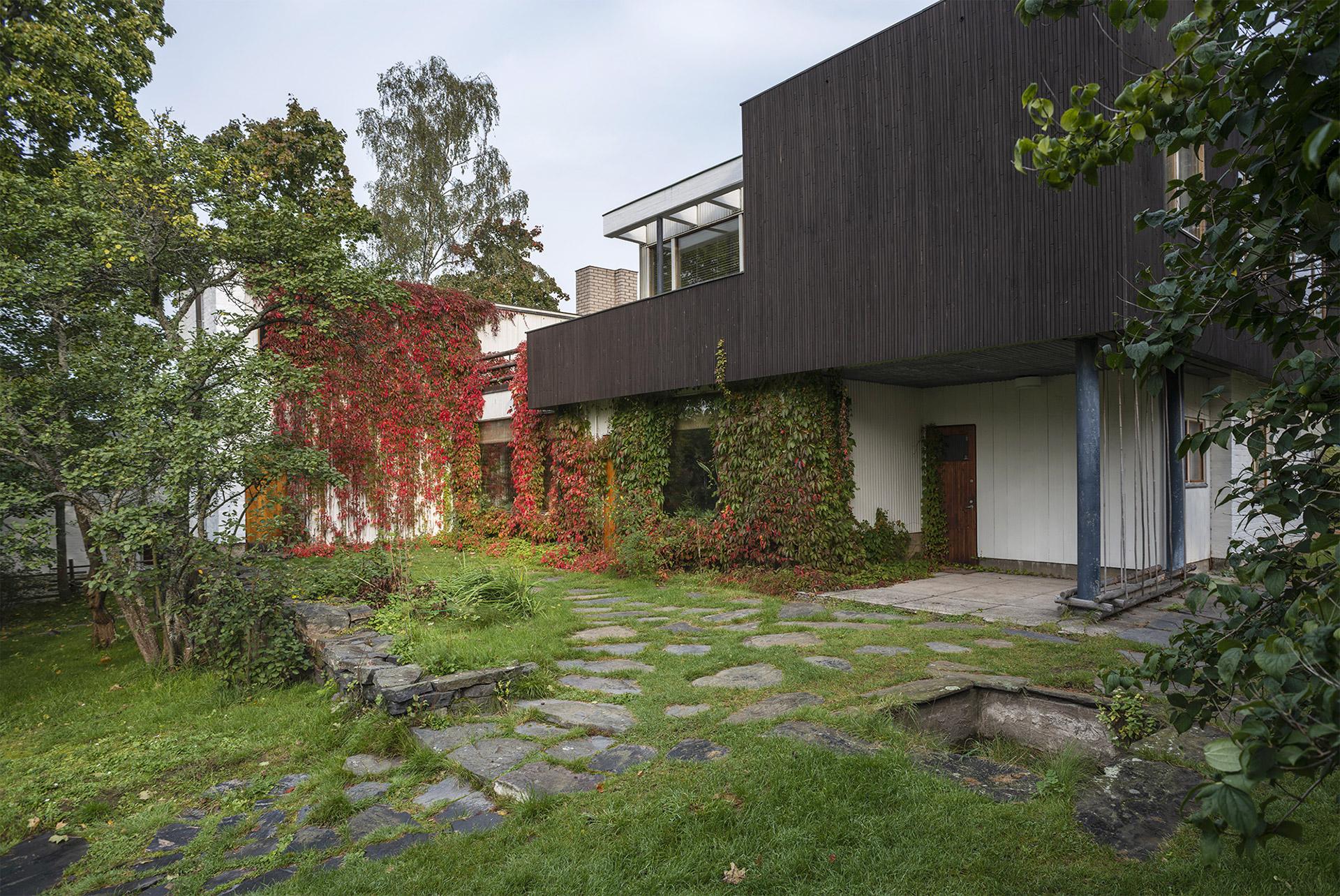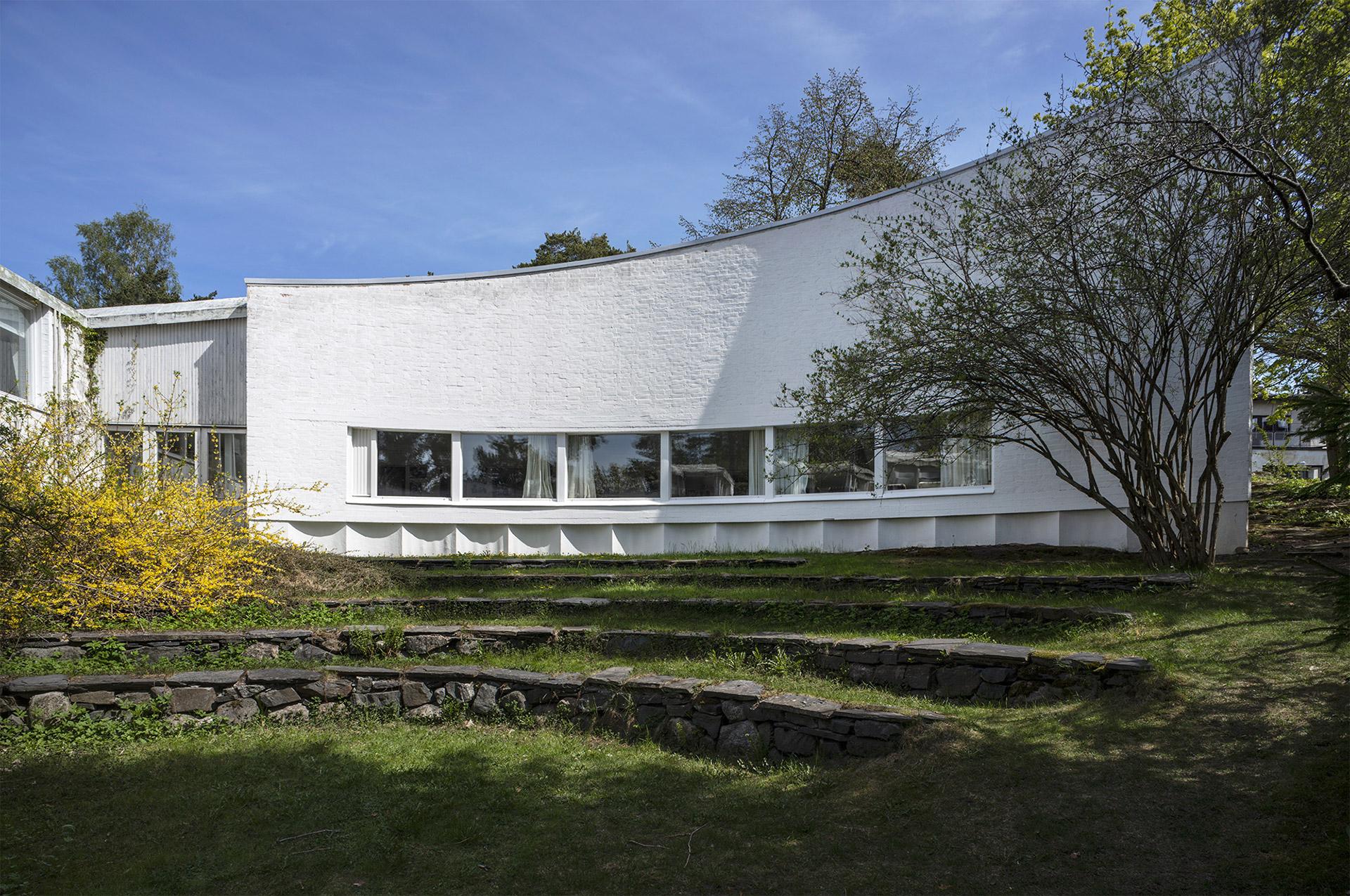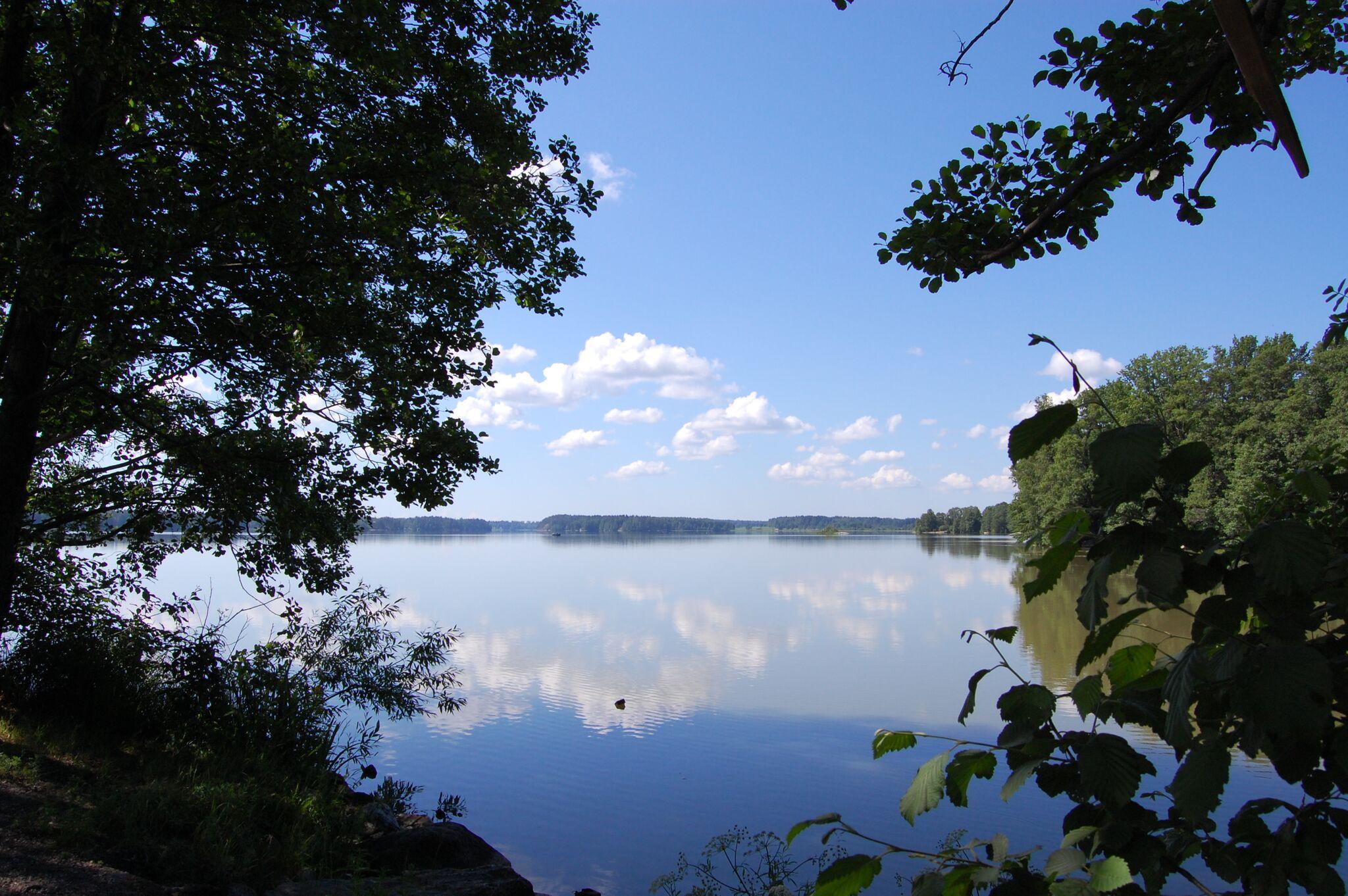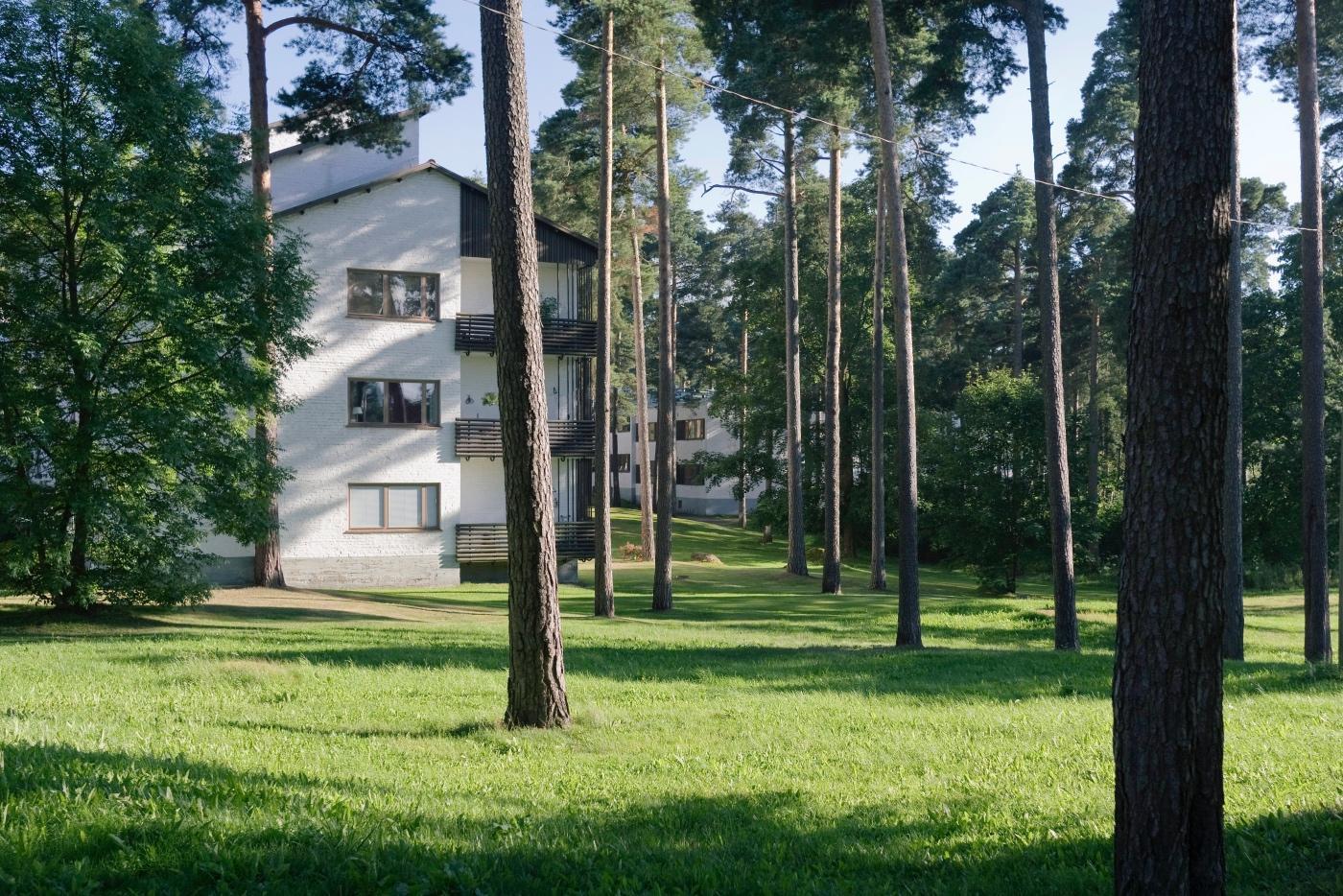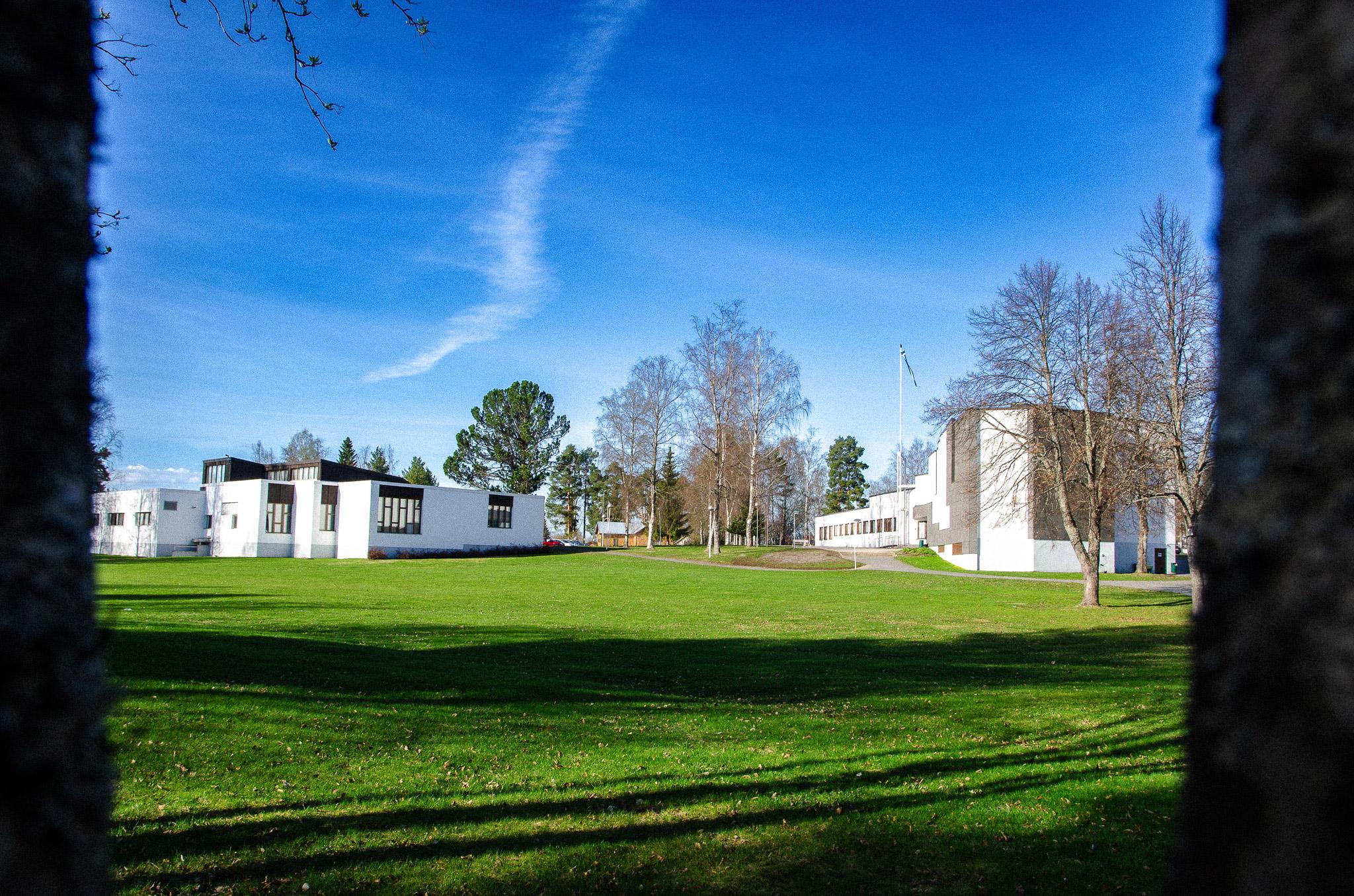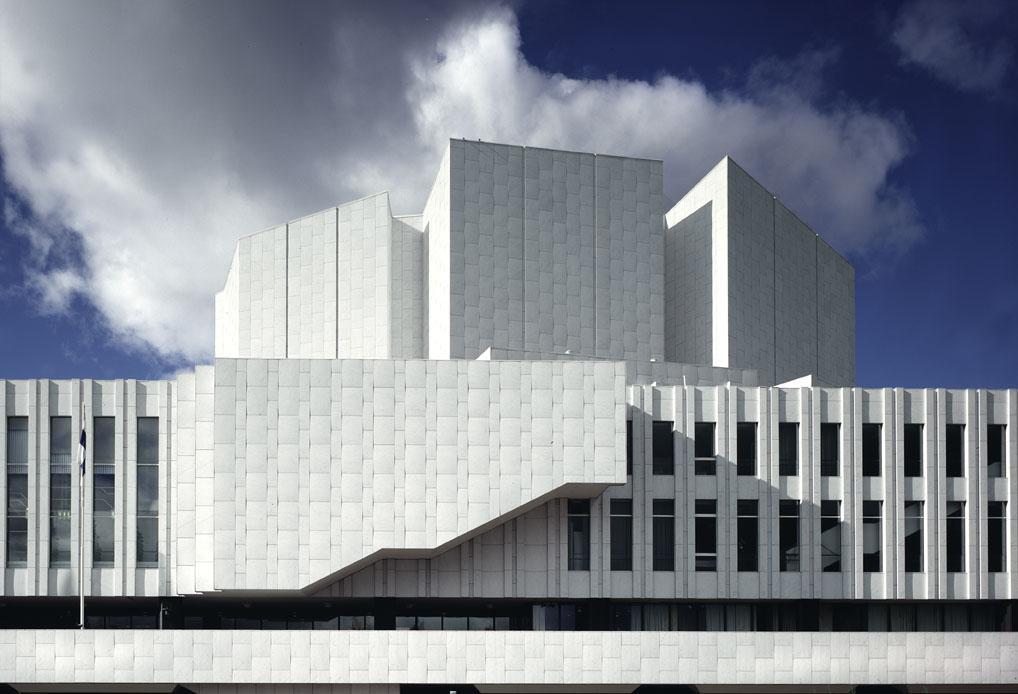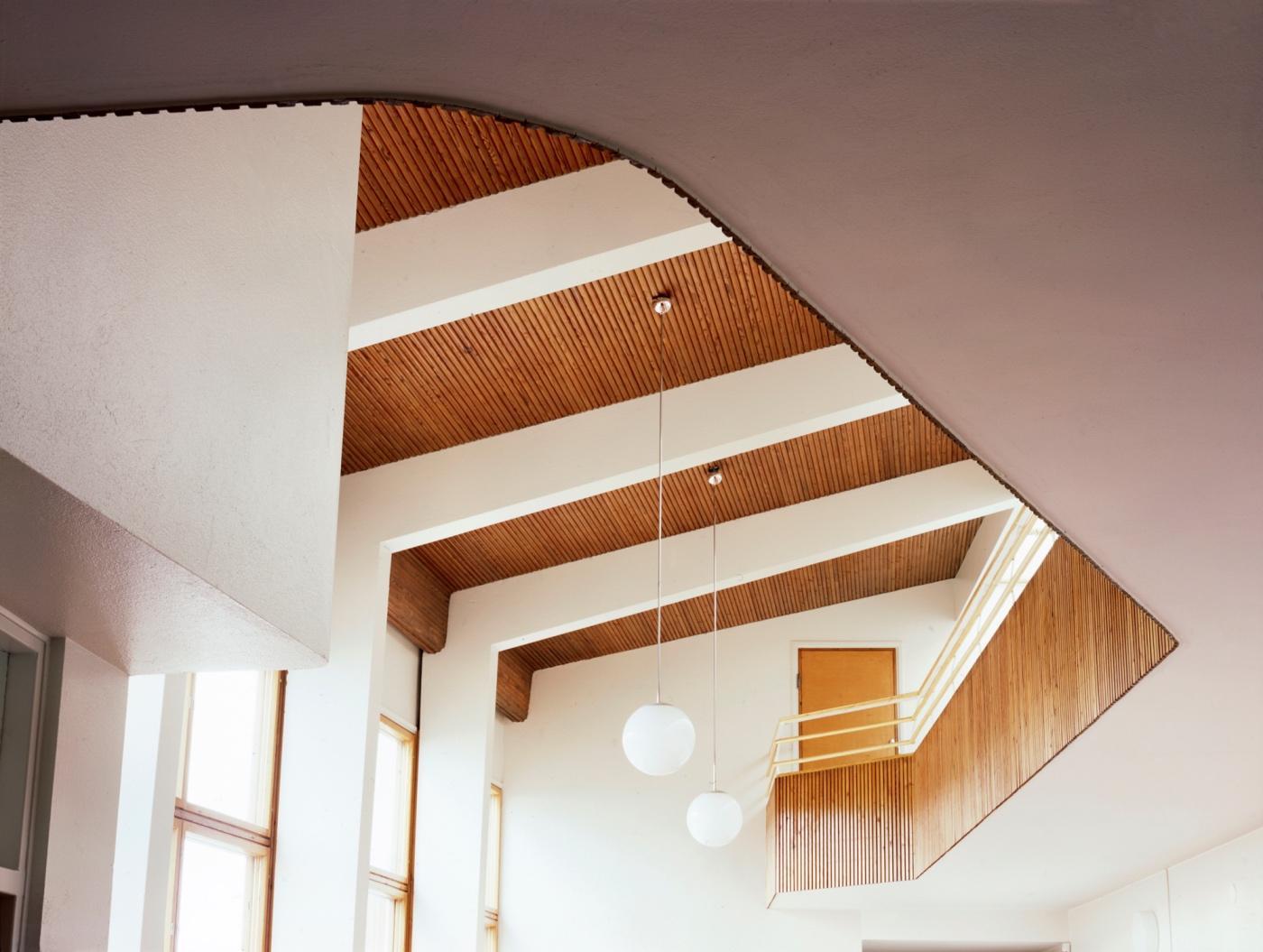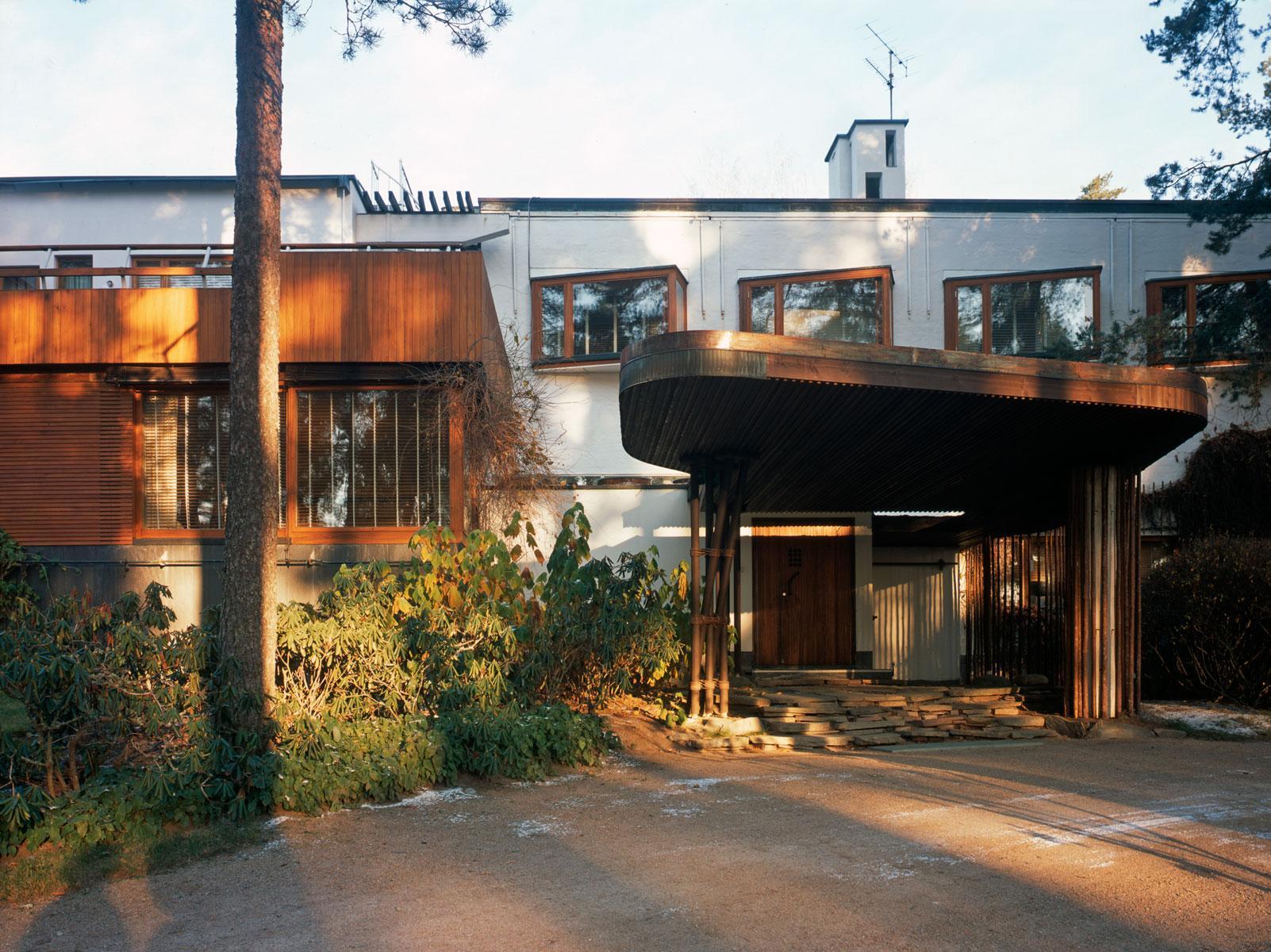National Pensions Institute (The Social Insurance Institution of Finland KELA) Head Office is close to the centre of Helsinki. The richly nuancedly monumental main building represents the best of Aalto’s office buildings. The building (1953-1956) is still in its original use.
Aino and Alvar Aalto won the design competition for the head office in 1948. New designs were made when the first plot was changed for another. The floor plan for the building on the new triangular plot was divided into smaller building units, which reduced the impression of a large building mass. A raised inner courtyard sheltered from the traffic in the street is left in the middle of the building. Its character as a public building has been emphasized by its exceptional siting in contrast to the neighbouring buildings. The building is split-level and is lower on the park side.
The complex comprises 310 rooms and 22,500 m2 of floor space. The facade materials are red brick, copper, and black granite. The building is distinguished throughout by workmanship and materials of high quality: all details are carefully studied and the interior design is exquisite, especially that of the management floor and the conference rooms. Aalto developed several new variants of his standard furniture for the Institute, a whole series of new light fittings, ceramic wall claddings, and a variety of textiles.
The general public has access only to the customer service hall, three stories high and lit by three prism-shaped lantern skylights. This room originally contained twenty-eight unroofed interview cubicles in which applicants could present their cases undisturbed to the staff. Of special interest is the tiny library, it is a miniature version of Aalto’s renowned early work, the Viipuri Library.
The intended site was a block marked off by Mannerheimintie, Töölönkatu and Kivelänkatu, though a neighbouring block facing Hesperiankatu was given as an alternative. The entire project was to be funded by the the Social Insurance Institution of Finland, which looked forward to obtaining a good, reliable return on its investment.
Aalto was commissioned to develop this extensive plan further, and he worked on it until 1952, when problems with the site led to the decision to build on another site altogether. The entire original plan for the National Pensions Institute was scrapped in 1952, when a much smaller, triangular site in Taka-Töölö (bordered by Nordenskiöldinkatu, Messeniuksenkatu, and Minna Canthinkatu) was selected.
In order to avoid the oppressive feeling of a large office building in a crowded urban setting, Aalto differentiated the workplaces for over 800 employees into a ramified organism spread out among several seemingly individual building volumes with excellent internal communications both above and below ground. The complex forms an irregular U surrounding a raised, planted courtyard sheltered from traffic noise and exhaust gases and with a view of an adjacent park; the height of the building volumes is stepped down towards the park.
